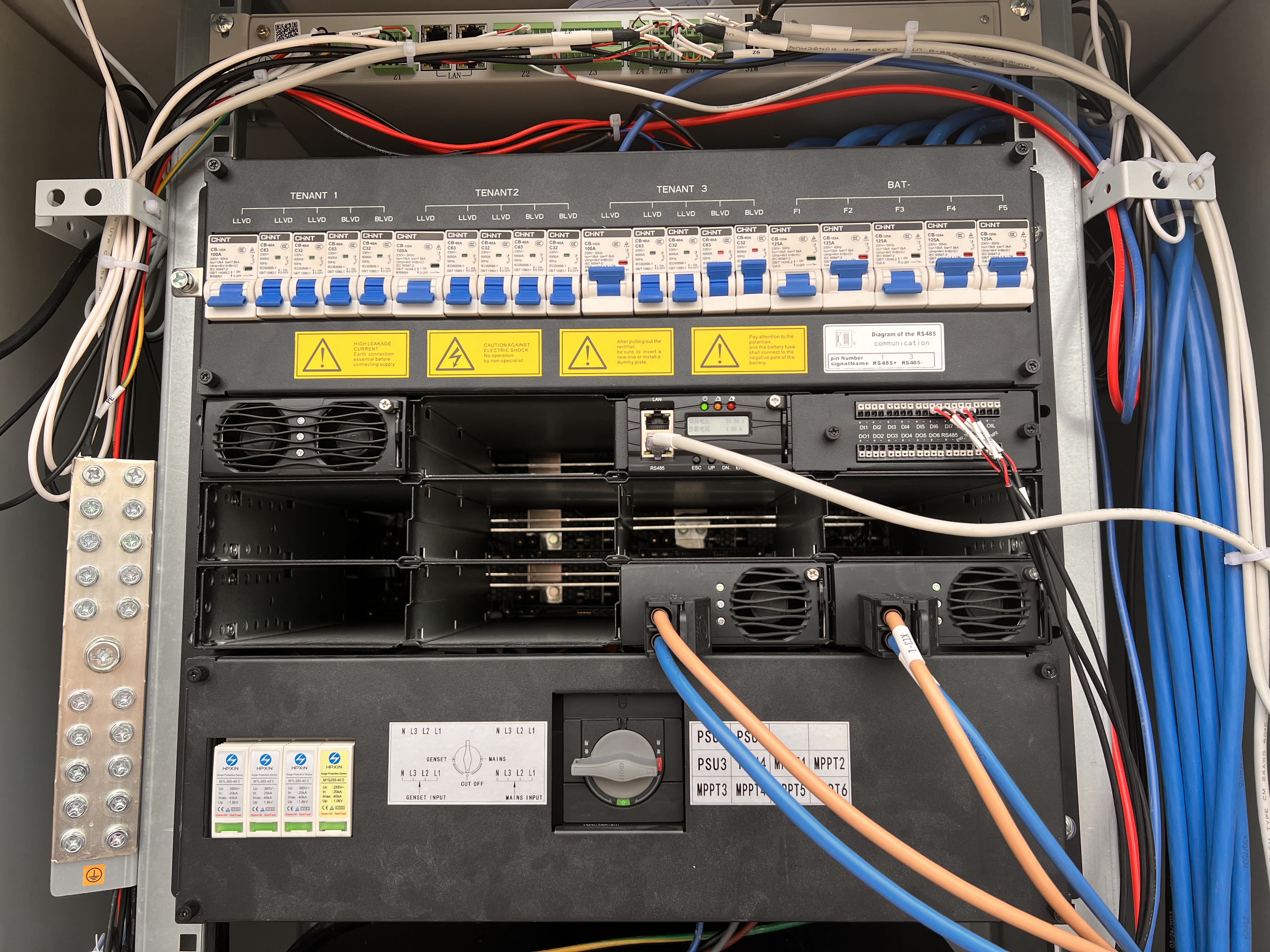ESTEL Telecom Battery Bank vs Lead-Acid Batteries for Energy Storage

When choosing the right battery for energy storage, understanding the differences between ESTEL telecom battery banks and lead-acid batteries becomes essential. Telecom battery banks offer advanced technology designed for telecommunication base stations, while lead-acid batteries remain a traditional choice. You need to consider factors such as efficiency, durability, and environmental impact. This comparison matters because reliable energy storage supports critical telecommunication infrastructure, ensuring uninterrupted service in demanding conditions.
Key Takeaways
Telecom batteries store more energy in smaller spaces than lead-acid ones.
They work better, giving power quickly and wasting less energy.
These batteries stay reliable even in very hot or cold weather.
Using telecom batteries costs less over time because they last longer and need less care.
Telecom batteries are better for the planet since they are easier to recycle and harm the environment less.
Performance Comparison

Energy Capacity and Density
When evaluating energy storage options, energy density plays a crucial role. A telecom battery bank, typically powered by lithium-ion technology, offers high energy density. This means it can store more energy in a smaller space compared to lead-acid batteries. You benefit from compact designs that save space and reduce weight, making installation easier.
Lead-acid batteries, on the other hand, have lower energy density. They require more physical space to store the same amount of energy. If your application demands efficient use of space, a telecom battery bank becomes the better choice. Its advanced design ensures optimal energy storage without compromising on capacity.
Efficiency and Responsiveness
Efficiency determines how effectively a battery converts stored energy into usable power. Telecom battery banks excel in this area. Their lithium-ion technology minimizes energy loss during charging and discharging cycles. You experience faster responsiveness, which is critical for applications requiring immediate power delivery, such as telecom base stations.
Lead-acid batteries lag in efficiency. They lose more energy during operation, which reduces overall performance. Their slower responsiveness can impact systems that rely on quick power sources. If you prioritize efficiency and responsiveness, a telecom battery bank provides a clear advantage.
Performance in Extreme Temperatures
Temperature affects battery performance significantly. Telecom battery banks are designed to handle extreme conditions. Whether it's freezing cold or scorching heat, they maintain consistent output. This reliability ensures uninterrupted energy storage for critical systems.
Lead-acid batteries struggle in extreme temperatures. Their performance drops in cold weather, and high temperatures can shorten their cycle life. If your application involves harsh environments, a telecom battery bank offers superior durability and reliability.
Cost Analysis
Installation Costs
When considering energy storage solutions, installation costs play a significant role. A telecom battery bank typically requires less space due to its higher energy density. This compact design reduces the need for large enclosures or extensive structural modifications. You can save on installation expenses, especially in areas with limited space.
Lead-acid batteries, however, demand more room because of their lower energy density. Their bulkier size often leads to higher installation costs. You may also need additional support structures to accommodate their weight. If minimizing upfront costs is a priority, a telecom battery bank offers a more cost-effective solution.
Maintenance and Operating Costs
Maintenance is another critical factor in evaluating battery options. Telecom battery banks, powered by advanced lithium-ion technology, require minimal upkeep. Their design eliminates the need for frequent water refills or corrosion checks. You benefit from reduced maintenance efforts and lower operating costs over time.
Lead-acid batteries, in contrast, need regular maintenance to ensure optimal performance. Tasks like checking electrolyte levels and cleaning terminals can add to your operational expenses. Their shorter cycle life also means more frequent replacements, further increasing costs. For a low-maintenance option, a telecom battery bank stands out as the better choice.
Long-Term Cost Benefits
Over the long term, the cost benefits of a telecom battery bank become evident. Its extended cycle life and high efficiency translate to fewer replacements and lower energy losses. You can achieve significant savings while enjoying reliable performance.
Lead-acid batteries may seem cheaper initially, but their shorter lifespan and higher maintenance needs can lead to higher cumulative costs. If you aim for long-term savings and reliability, investing in a telecom battery bank proves to be a smarter decision.
Lifespan and Durability
Service Life of Telecom Battery Banks
When considering the service life of a telecom battery bank, you benefit from the advanced technology of lithium-ion batteries. These batteries, particularly those using Lithium Ferro Phosphate (LiFePO4) chemistry, offer impressive longevity. They can achieve a cycle life of over 2,000 to 3,000 cycles at an 80% depth of discharge. If you discharge them to 70%, they can exceed 5,000 cycles. This extended cycle life ensures that telecom battery banks provide reliable energy storage for many years, reducing the need for frequent replacements.
Service Life of Lead-Acid Batteries
Lead-acid batteries, a more traditional choice, have a shorter service life compared to their lithium-ion counterparts. Typically, they offer a calendar life of 3 to 5 years under standard conditions. Their cycle life ranges from 200 to 500 cycles for most models, although industrial versions can reach up to 1,500 cycles. However, factors like temperature and charging practices significantly impact their lifespan. Ideal operating temperatures range between 68-77°F (20-25°C). An increase of 15-18°F can halve their life. Proper charging, within the voltage range of 2.3-2.45V per cell for bulk charging, is crucial to maximize their longevity.
Durability in Harsh Conditions
Note: Durability is crucial for batteries used in challenging environments.
Telecom battery banks excel in harsh conditions. Their design allows them to maintain performance in extreme temperatures, ensuring consistent energy storage. This makes them ideal for applications where reliability is paramount. In contrast, lead-acid batteries struggle in such environments. Cold weather can reduce their performance, while high temperatures can shorten their cycle life. If your application involves exposure to harsh conditions, a telecom battery bank offers superior durability and reliability.
Environmental Impact

Sustainability of Telecom Battery Banks
Telecom battery banks, often powered by lithium-ion battery technology, offer a more sustainable energy storage solution. Their high energy density allows you to store more power in a smaller footprint, reducing the need for extensive resources during production. These batteries also have a longer cycle life, which means fewer replacements over time. This longevity minimizes waste and reduces the environmental burden associated with frequent disposal.
Moreover, lithium-ion batteries are designed with recyclability in mind. Many components, such as lithium and cobalt, can be recovered and reused in new batteries. This closed-loop approach supports a circular economy, making telecom battery banks a greener choice for energy storage. By choosing these advanced power sources, you contribute to a more sustainable future.
Environmental Challenges of Lead-Acid Batteries
Lead-acid batteries pose significant environmental challenges despite their widespread use. While they boast a 99% recycling rate, improper disposal remains a major concern. Lead, a toxic heavy metal, can contaminate soil and water if not handled correctly. Informal recycling practices, especially in developing countries, exacerbate this issue, leading to severe health and environmental consequences.
These batteries are also prone to fires, which release harmful pollutants into the air. The recycling process itself is highly pollutive and hazardous, often identified as a top pollution problem by environmental organizations. Additionally, the hazardous materials within lead-acid batteries complicate recycling efforts, making them less environmentally friendly compared to telecom battery banks.
Recycling and Disposal Considerations
Recycling plays a crucial role in mitigating the environmental impact of batteries. Telecom battery banks, with their advanced design, simplify the recycling process. Their components are easier to extract and reuse, reducing waste and conserving resources. This efficiency aligns with global efforts to promote sustainable energy storage solutions.
In contrast, lead-acid batteries present numerous challenges during recycling. Although their design facilitates efficient recycling, the process generates significant pollution. Improper disposal can lead to long-term environmental damage, including soil and water contamination. By opting for telecom battery banks, you can avoid these issues and support cleaner recycling practices.
Application Suitability
Telecom Applications
Telecommunication systems demand reliable and efficient power sources to ensure uninterrupted service. A telecom battery bank, powered by lithium-ion battery technology, excels in meeting these requirements. Its high energy density allows you to store more power in a compact design, saving valuable space at telecommunication base stations. This feature becomes critical when space is limited or when installations occur in urban areas.
The fast responsiveness of telecom battery banks ensures immediate power delivery during outages. This capability supports the continuous operation of telecommunication equipment, even in emergencies. Additionally, their long cycle life reduces the need for frequent replacements, lowering maintenance efforts and costs.
Lead-acid batteries, while still used in some telecommunication setups, fall short in several areas. Their lower energy density requires more space, and their slower responsiveness can delay power delivery. If you prioritize efficiency and reliability for telecommunication base stations, telecom battery banks provide a superior solution.
Renewable Energy Storage
Renewable energy systems, such as solar and wind, rely on efficient energy storage to manage fluctuations in power generation. Telecom battery banks, with their advanced lithium-ion technology, offer high efficiency and long-term reliability. These batteries store excess energy during peak production and release it when demand rises, ensuring a steady power supply.
To better understand the role of different battery types in renewable energy storage, consider the following comparison:
Battery Type | Characteristics | Efficiency | Cost (per kW) | Energy Density (Wh/l) | Life Cycle (years) |
|---|---|---|---|---|---|
Lithium-ion | High power densities, low self-discharge, various cathode types | $4000 | 200-500 | N/A | |
Vanadium Redox Flow | Mature technology, high life cycles, moderate power and energy densities | Up to 90% | Moderate | 20-70 | >10,000 |
Zinc Bromine | Hybrid flow battery, prone to corrosion, lower efficiency | 65-80% | N/A | 35-75 | 10-20 |
The table highlights the advantages of lithium-ion batteries, including their high efficiency and energy density. These features make telecom battery banks an excellent choice for renewable energy storage. In contrast, lead-acid batteries struggle with lower efficiency and shorter lifespans, making them less suitable for long-term renewable energy projects.
Backup Power Systems
Backup power systems require batteries that can deliver reliable performance during outages. Telecom battery banks excel in this role due to their fast responsiveness and high energy density. These features ensure that critical systems, such as hospitals, data centers, and emergency services, remain operational during power failures.
The durability of telecom battery banks in extreme conditions further enhances their suitability for backup power systems. Whether exposed to freezing temperatures or high heat, these batteries maintain consistent performance. Their long cycle life also reduces the frequency of replacements, providing a cost-effective solution over time.
Lead-acid batteries, while commonly used in backup systems, have limitations. Their slower response times and reduced performance in extreme temperatures can compromise reliability. If you need a dependable and efficient backup power source, telecom battery banks offer a clear advantage.
Choosing between ESTEL telecom battery banks and lead-acid batteries depends on your priorities. Telecom battery banks excel in energy density, efficiency, and durability, making them ideal for long-term applications. Lead-acid batteries offer lower upfront costs but require frequent maintenance and replacements. If sustainability matters, telecom battery banks provide a greener solution. Evaluate your needs based on performance, cost, and environmental impact. Selecting the right battery ensures reliable energy storage tailored to your specific requirements.
FAQ
What makes ESTEL telecom battery banks better than lead-acid batteries?
Telecom battery banks offer higher energy density, longer lifespan, and better performance in extreme conditions. They also require less maintenance and have a lower environmental impact. These features make them a superior choice for modern energy storage needs.
Are telecom battery banks more expensive than lead-acid batteries?
Telecom battery banks have higher upfront costs. However, their longer lifespan, lower maintenance requirements, and energy efficiency result in significant savings over time. You’ll find them more cost-effective for long-term applications.
Can lead-acid batteries still be a good choice for energy storage?
Lead-acid batteries work well for low-cost, short-term applications. They are suitable if you prioritize lower initial investment and don’t require high energy density or long service life. However, they need regular maintenance and frequent replacements.
How do telecom battery banks handle extreme temperatures?
Telecom battery banks excel in extreme temperatures. They maintain consistent performance in freezing cold or scorching heat. This makes them ideal for outdoor installations or environments with fluctuating weather conditions.
Are telecom battery banks environmentally friendly?
Yes, telecom battery banks are more sustainable. Their longer lifespan reduces waste, and their components are easier to recycle. By choosing these batteries, you contribute to a cleaner and greener energy storage solution.
See Also
Telecom Cabinets Powered By Energy Storage Battery Solutions
Exploring Pros And Cons Of Lead-Acid Battery Technology
A Detailed Overview Of Telecom Cabinet Battery Risk Assessment
The Superiority Of Lithium Batteries In Telecom Applications
CALL US DIRECTLY
86-13752765943
3A-8, SHUIWAN 1979 SQUARE (PHASE II), NO.111, TAIZI ROAD,SHUIWAN COMMUNITY, ZHAOSHANG STREET, NANSHAN DISTRICT, SHENZHEN, GUANGDONG, CHINA


